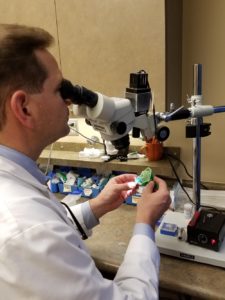Even though acid reflux is a condition that originates in the stomach, it can affect other areas of the body, including the mouth. The truth is, people who suffer from acid reflux can be at greater risk for oral health concerns than those who don’t. Our dental office in Buckhead is here to help anyone dealing with acid reflux understand how it can negatively affect dental health and what you can do to reduce your risk.
How Acid Reflux Affects the Mouth
A natural and important part of proper digestion includes the production of stomach acids. These acids help break down food so the body can digest what we eat. But these acids don’t always stay in the stomach. They can creep up the throat and into the mouth. Normally saliva in the mouth helps neutralize the acid and wash it away before it has a chance to cause damage. But when someone has acid reflux, which may also be referred to as GERD, stomach acids make their way up into mouth repeatedly. This leaves the mouth and teeth exposed to the acid. It’s this consistent exposure to the acid that causes damage to teeth.
Acid Leads to Tooth Damage
Acid is one of the worst things for teeth as it eats away at the protective enamel and leaves teeth at increased risk for decay, cavities, and other problems. As this erosion occurs and teeth are damaged, the need for dental treatment such as fillings, a root canal, or a dental crown may be required to help restore the tooth’s structure. Some signs that your teeth may have some level of acid erosion include:
- Increased sensitivity
- Tooth discoloration
- Painful abscess
Reduce Your Risk
Many times acid reflux can be treated or the symptoms can be minimized through the use of a doctor-recommended medication. Additionally, there are things you can do to reduce your risk of damage caused by acid reflux including:
- Getting tested for sleep apnea as people with sleep apnea are more likely to have GERD
- Using a fluoride toothpaste designed to strengthen enamel
- Quitting smoking and drinking alcohol to reduce acid reflux episodes
- Seeing your dentist in Buckhead every six months to catch any problems early.
If you suffer from acid reflux and are worried about your dental health, we welcome you to call our Buckhead dental office to schedule an appointment today. We will take a close look at your overall oral health and talk with you about the best way to protect your teeth against the dangers of acid reflux.















